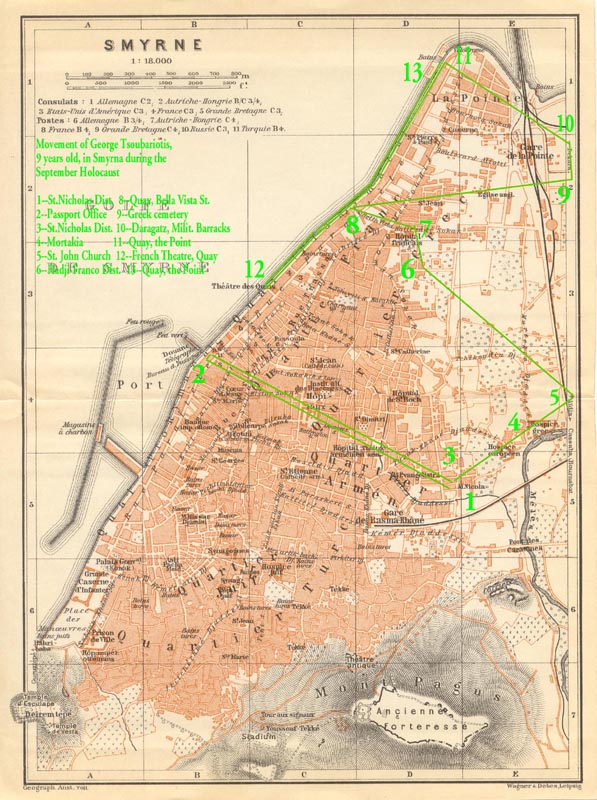 SMYRNA COMMEMORATIVE SERIES  |
|
|
This is the second in a series of articles and items commemorating the 80th anniversary of the Smyrna holocaust in Asia Minor. In the 70s, Demetrios I. Archigenes compiled a series of eyewitness accounts of the tragedy, oral accounts which had been collected in prior decades. The result is a collection of stunningly vivid recollections of the terrible experiences of Greeks in Asia Minor during the "catastrophia" or holocaust. Published privately in Athens in 1973, "Martyries apo te Mikrasiatike katastrophe," or "Eyewitness Accounts of the Asia Minor Catastrophe," is not widely available in the U.S., nor have we located any English translation. In honor of the memory of those who have perished, we offer an English translation and adaptation of one of these eyewitness accounts by Mr. George Tsoubariotis. Comments in parentheses represent explanatory notes of the original editor. Notes in brackets are those of the translator, Mary Papoutsy, who assumes responsibility for any errors.
Second Witness George Tsoubariotis The cavalry unit didn't stir to depart. Out of fear, we huddled close to a building on the quay. A few Romioi [Greeks and westerners, but chiefly referring to Greeks] did the same thing, those who didn't anticipate such evil befalling the city. But when the unit had passed in front of us and headed for the Konaki [Turkish administrative center], we saw that the riders were Tsetses, poorly dressed with pigskin coverings on their feet and swords in their hands. And they were shouting "Korkmayin, Korkmayin!' ("Don't be afraid!") They were indicating that we should show ourselves, because they weren't going to kill anyone. After they had passed, my father took us by hand and, almost at a run, we advanced street by street until we reached our house. Other people had also run with us and were shouting, "the Tsetses, the Tsetes, lock up your houses!" Next Page Page 1 2 3 |
|
|
|

